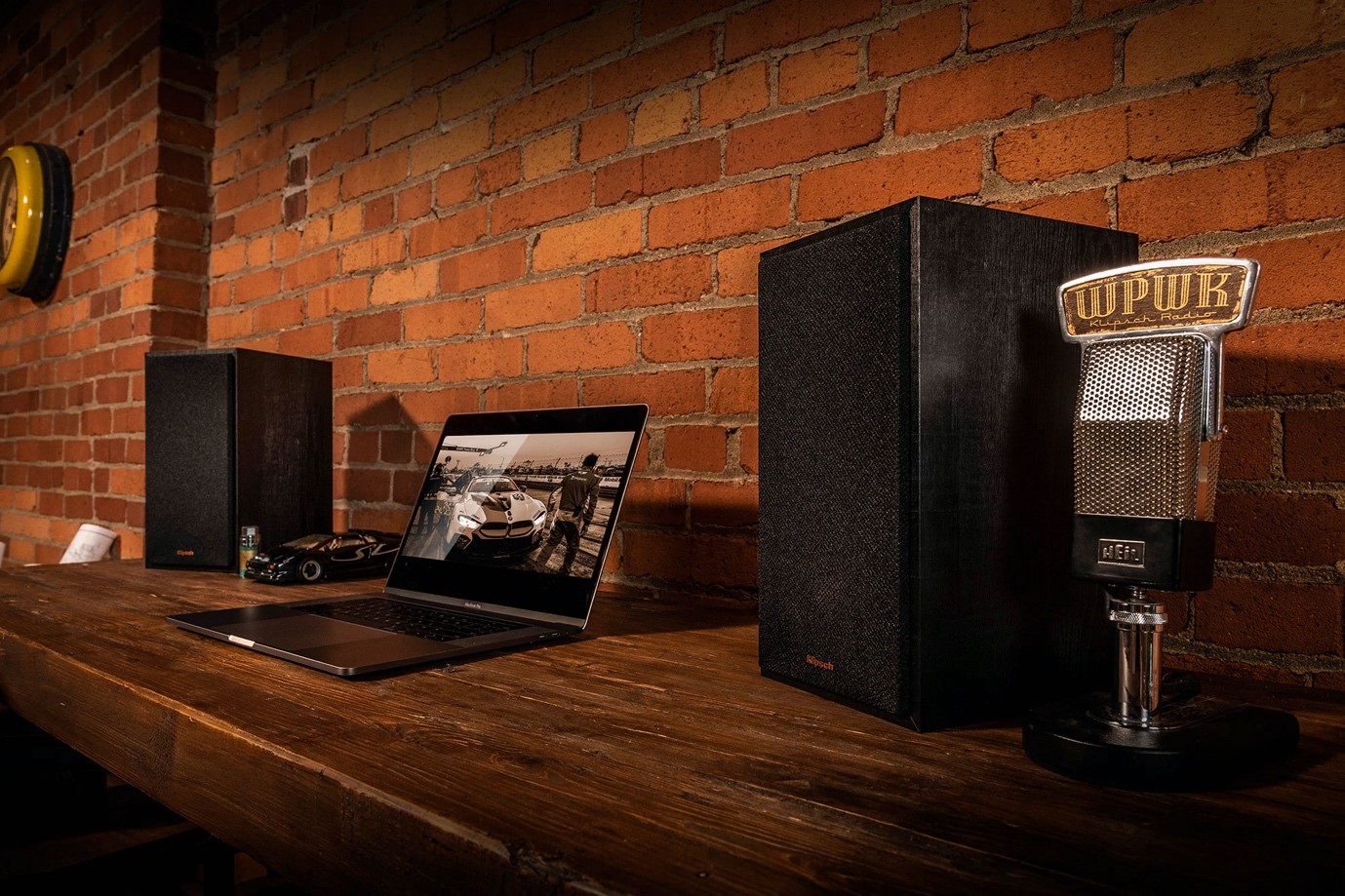
There’s something incredibly satisfying about rich, room-filling audio that turns a regular computer setup into a dynamic entertainment zone. If you’ve ever compared the thin, tinny sound of built-in computer speakers with a proper set of passive bookshelf speakers, you know exactly what’s missing. Whether you’re working from home, gaming, streaming movies, or just vibing to your favorite playlist, audio quality can make or break your experience.
Using passive bookshelf speakers as computer speakers is not only possible but also a smart way to significantly upgrade your desktop sound. While most people plug in USB speakers and call it a day, true audio lovers are waking up to the magic of passive speakers—especially bookshelf ones that are known for delivering balanced, high-fidelity sound in a compact footprint.
But here’s the thing: you can’t just plug passive speakers into your laptop and expect them to work. They need a bit more love and gear to reach their full potential. This guide walks you through everything—step-by-step, in plain language, with all the nuance and clarity you need to make this upgrade a success.
Understanding Passive Bookshelf Speakers
Before going to the usage of passive bookshelf speakers, it is important to know what makes them different from other speakers. The passive speakers do not have built-in amplifiers in the speakers themselves. In contrast to powered or active speakers, they require an external amplifier or an AV receiver to function correctly. That is a challenge and at the same time, it is an opportunity.
The disadvantage is that you will need a little bit of configuration. The opportunity is that passive speakers are typically cheaper and give much more control over the audio path. They are also more versatile – you can always change the amp, change the source, or even build a full sound system step by step.
Bookshelf speakers are especially popular in the desktop usage category of speakers. They are compact, can be installed in any interior, and have good performance and moderate size.
Why You Should Use Passive Bookshelf Speakers for Your PC
Once you have enjoyed the fruit of the upgrade, it becomes very difficult to go back to the previous version. Bookshelf speakers are speakers that do not have their own amplification and deliver high tones, powerful mid-tones, and balanced bass that can transform the sound of your PC. Music becomes immersive. Dialogue becomes crisp. Games feel more cinematic.
They also have a wider frequency response range than most of the USB or Bluetooth speakers. For an audiophile, a lover of HDR videos, a musician, or a sound engineer, the difference is not negligible; it is as different as night and day.
Another big win? Style. It is a fact that most of the desktop speakers are designed in such a way that they resemble some sort of a plastic box. A good bookshelf speaker, particularly those from high-end audio brands, adds class to your desk. Wooden cabinets, magnetic grilles, and the focus on design make your space look and sound better.
The Essential Components You’ll Need
In order to connect your passive bookshelf speakers to your computer, your audio system should include the following:
- A pair of passive bookshelf speakers (obviously)
- An amplifier or AV receiver
- Speaker wire
- A 3.5mm-to-RCA cable (or a DAC, depending on your setup)
- Your computer (desktop or laptop)
That’s it. That may seem like a lot, but once all the components are connected, it is just a matter of connecting and playing.
Step 1: Selecting the Right Passive Bookshelf Speakers
It is also important to understand that not all speakers are the same. When choosing a pair of passive bookshelf speakers for computer use, it is recommended to opt for speakers that are famous for their clarity and near field response. Other factors include sensitivity and impedance, which should be as high as possible, above 85 dB and 6 or 8 ohms respectively.
It is important to note that the quality of construction and the quality of the materials used are equally important. The cabinet that has been damped well will sound better and will also have a longer lifespan. It is therefore expected that companies that have been in the audio business for a long time will be in a position to offer better quality products. Some bookshelf speakers have rear-firing ports and may require some distance from the wall to avoid bass bloat, so consider the position of the desk as well.
Step 2: Pick a Compatible Amplifier
This is where many people hesitate, and it is a mistake because it is the best way to make sure that the content is interesting and engaging to the readers. No, you do not need a big box, however, if you wish to have one, it is not an issue. Therefore, as long as the desktop amplifier is able to deliver adequate power to the speakers, a small one will be adequate. Make sure that the power output is suitable for your speaker in terms of watts per channel.
Some amplifiers have USB DACs or Bluetooth modules for flexibility in terms of the input signals to be amplified. Others are strictly analog. If you are interested in sound quality, then a stereo amp with a clean DAC will be a good addition to your equipment. Remember, the amp is the heart of your audio system—choose wisely.
Step 3: Connect Everything
Finally, it is time to wrap it up: linking it all together. First, you should connect the speaker wires from the amp to the passive bookshelf speakers. Make sure that the connections are made between two similar polarities, positive to positive or negative to negative, to avoid phase issues.
Then, connect your amp to your computer. If your amp has an input of 3.5mm, you can use a 3.5mm to 3.5mm aux cable. In most cases, you will be using a 3.5mm to RCA cable, where the 3.5mm plug is inserted into the headphone jack of the computer and the RCA plug into the input of the amp.
If your amp or DAC has USB input, that is even better because it bypasses your computer’s sound card and offers better sound quality.
Step 4: Optimize Your Sound
After all the connections have been made, switch on the amp and the speakers. Start with the volume low and play a song that the listeners are familiar with. Now tweak the amp settings to your taste. Some amps have bass and treble controls, while others are very simple. If your speakers sound boomy or thin, try moving them around – distance from the walls, angle of the front of the speakers, and height of the speakers all matter.
The volume of the computer should be set to 75-85% and the volume level should be adjusted with the amplifier. It also helps to avoid digital distortion and keep a good signal.
If you want to go further, you can install software EQ such as Equalizer APO or use room correction tools. But in all honesty, if you have good bookshelf speakers and you place them correctly, you might not have to adjust anything.
Step 5: Enjoy the Upgrade
This is where all the hard work comes in handy. Whether you are watching your favorite movie for the third time, listening to music at work, or being fully engaged in the sound of battle, the improvement is clear.
It is no longer a mere background but a part of the process. You will be able to perceive new layers in the songs, footsteps in the games, or vocal tones in podcasts. It brings life to your desktop if you have passive bookshelf speakers.
The following are some of the most common questions that people have concerning passive speakers with computers:
There are some questions that are quite common, especially with those who are new to the world of high fidelity sound systems.
Can passive bookshelf speakers be connected to a PC without the use of an amplifier?
No, passive speakers require an amplifier or an AV receiver to function in the same way, as they do not have an in-built amplifier. It is impossible to draw a direct correlation and it may even have a negative impact on your computer.
Do I need an expensive amp?
Not necessarily. There are cheap amps that sound good, especially if used in nearfield conditions. It is not necessary to be very selective with the brands of the accessories, but one should focus on compatibility and sound quality.
Can I use Bluetooth?
Yes, if your amplifier is Bluetooth enabled. Some compact amps even have high-res Bluetooth codecs such as aptX HD or LDAC, which is beneficial for wireless listening.
Where should bookshelf speakers be placed on a desk?
Ideally, position them at the level of your ears and position yourself in a manner that you and the head form an equilateral triangle. If the speakers are rear-ported, then it is recommended to leave some space behind the speakers.
Will this work for gaming?
Absolutely. Games become much more realistic with the help of stereo imaging and deeper bass. It is a familiar situation for both streamers and professional players as well.
Why Passive Bookshelf Speakers Are Worth It
Well, let’s face it, USB speakers are portable and easy to use, but they do not offer the sound quality of a pair of proper bookshelf passive speakers. The depth, dynamics, and realism you get are just on another level compared to what you get with the soundstage. It is something that once one gets to taste it, he or she cannot let go easily.
Yes, the initial setup is a bit more involved. But it is not the question of loudness, but the question of quality of the sound. It is about acquiring something that will not be obsolete in one year or be replaced by a newer model. Passive systems can be upgraded over time—better speakers, better amp, better DAC. You are not limited to a closed environment.
If you are an audiophile, a gamer, a home office worker, or just a person who appreciates good sound, swapping computer speakers for passive bookshelf speakers is one of the best things you can do.
Final Thoughts
If you are considering enhancing the audio on your desktop, then it is high time to do so. Bookshelf speakers are the best way to get high fidelity sound from your desk. With speakers, an amp, and cables, you will be able to have sound that is so much better.
When it comes to the equipment, make sure that you are using the original equipment from the right people. If you are looking for the best passive bookshelf speakers, amplifiers, and custom audio solutions, then Cinebels is the place for you, as it is India’s home audio and cinema systems store.
